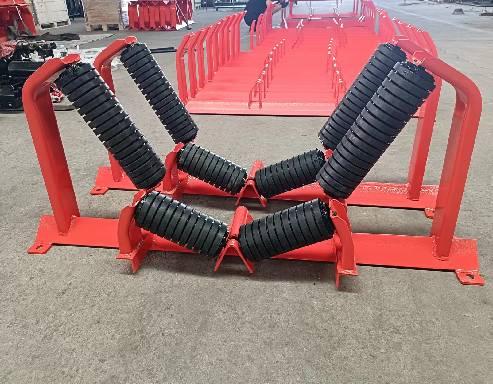 Afrikaans
Afrikaans  Albanian
Albanian  Amharic
Amharic  Arabic
Arabic  Armenian
Armenian  Azerbaijani
Azerbaijani  Basque
Basque  Belarusian
Belarusian  Bengali
Bengali  Bosnian
Bosnian  Bulgarian
Bulgarian  Catalan
Catalan  Cebuano
Cebuano  Corsican
Corsican  Croatian
Croatian  Czech
Czech  Danish
Danish  Dutch
Dutch  English
English  Esperanto
Esperanto  Estonian
Estonian  Finnish
Finnish  French
French  Frisian
Frisian  Galician
Galician  Georgian
Georgian  German
German  Greek
Greek  Gujarati
Gujarati  Haitian Creole
Haitian Creole  hausa
hausa  hawaiian
hawaiian  Hebrew
Hebrew  Hindi
Hindi  Miao
Miao  Hungarian
Hungarian  Icelandic
Icelandic  igbo
igbo  Indonesian
Indonesian  irish
irish  Italian
Italian  Japanese
Japanese  Javanese
Javanese  Kannada
Kannada  kazakh
kazakh  Khmer
Khmer  Rwandese
Rwandese  Korean
Korean  Kurdish
Kurdish  Kyrgyz
Kyrgyz  Lao
Lao  Latin
Latin  Latvian
Latvian  Lithuanian
Lithuanian  Luxembourgish
Luxembourgish  Macedonian
Macedonian  Malgashi
Malgashi  Malay
Malay  Malayalam
Malayalam  Maltese
Maltese  Maori
Maori  Marathi
Marathi  Mongolian
Mongolian  Myanmar
Myanmar  Nepali
Nepali  Norwegian
Norwegian  Norwegian
Norwegian  Occitan
Occitan  Pashto
Pashto  Persian
Persian  Polish
Polish  Portuguese
Portuguese  Punjabi
Punjabi  Romanian
Romanian  Russian
Russian  Samoan
Samoan  Scottish Gaelic
Scottish Gaelic  Serbian
Serbian  Sesotho
Sesotho  Shona
Shona  Sindhi
Sindhi  Sinhala
Sinhala  Slovak
Slovak  Slovenian
Slovenian  Somali
Somali  Spanish
Spanish  Sundanese
Sundanese  Swahili
Swahili  Swedish
Swedish  Tagalog
Tagalog  Tajik
Tajik  Tamil
Tamil  Tatar
Tatar  Telugu
Telugu  Thai
Thai  Turkish
Turkish  Turkmen
Turkmen  Ukrainian
Ukrainian  Urdu
Urdu  Uighur
Uighur  Uzbek
Uzbek  Vietnamese
Vietnamese  Welsh
Welsh  Bantu
Bantu  Yiddish
Yiddish  Yoruba
Yoruba  Zulu
Zulu Exploring Various Types of Conveyor Rollers and Their Applications in Different Industries
Different Types of Conveyor Rollers
Conveyor rollers are an essential component of any conveyor system, playing a vital role in the efficient movement of goods, materials, and products in various industrial applications. These rollers come in different types and designs to suit the specific needs of diverse industries, ranging from manufacturing and warehousing to distribution and packaging. Understanding the different types of conveyor rollers can help businesses optimize their material handling processes.
1. Gravity Rollers
Gravity rollers are perhaps the simplest type of conveyor rollers. They rely on the force of gravity to move products and are typically installed on an inclined plane. These rollers are designed to allow for the smooth movement of items down the slope, making them an ideal choice for applications where gravity can be utilized effectively. Gravity roller conveyors are commonly used for transporting lightweight packages, cartons, and various types of goods in shipping and receiving areas.
2. Powered Rollers
Powered rollers use motors to drive the movement of goods along the conveyor. This type of roller can be used in both straight and curved conveyors. Powered roller systems are often equipped with sensors, allowing for precise control over the movement of items. They are ideal for heavy loads or applications where items need to be moved horizontally or where gravity alone is insufficient. Common applications include sorting and accumulation systems in warehouses and distribution centers.
Heavy-duty rollers are designed to support substantial loads and withstand harsh operating conditions. These rollers are usually constructed from robust materials such as steel or heavy-duty plastic. They are commonly used in industrial applications where large and heavy items, such as machinery parts, pallets, and bulk materials, need to be transported. Heavy-duty rollers ensure durability and longevity in demanding environments.
different types of conveyor rollers

4. Specialty Rollers
Specialty rollers are designed for specific applications and may incorporate unique features to accommodate particular types of products. For example, zone rollers are equipped with a control system that allows for the independent movement of items in specific zones, preventing jamming and allowing for efficient accumulation. Other types include food-grade rollers designed for use in the food processing industry, where hygiene and safety standards are paramount.
5. Idler Rollers
Idler rollers are non-powered rollers used to support the conveyor belt in various systems. They provide stability and help maintain the alignment of the belt as it moves items along the conveyor. Conveyor idlers are crucial for maintaining the overall efficiency of the conveyor system and preventing wear and tear on the belt. They are commonly found in bulk material handling applications, such as mining and agriculture.
6. Return Rollers
Return rollers, also known as tail rollers, are located on the return side of a conveyor belt system. They support the belt as it returns to the loading area, helping to maintain proper tension and alignment. These rollers are vital for ensuring that the conveyor system operates smoothly and efficiently without causing unnecessary wear on the belt.
Conclusion
In conclusion, conveyor rollers are integral components of conveyor systems, and selecting the right type is critical for successful material handling. From gravity and powered rollers to heavy-duty and specialty options, the diversity of conveyor rollers allows businesses to customize their material handling processes according to their specific needs. By understanding the different types of conveyor rollers and their applications, organizations can enhance productivity, improve efficiency, and ensure the safe and effective movement of goods throughout their operations.
-
Revolutionizing Conveyor Reliability with Advanced Rubber Lagging PulleysNewsJul.22,2025
-
Powering Precision and Durability with Expert Manufacturers of Conveyor ComponentsNewsJul.22,2025
-
Optimizing Conveyor Systems with Advanced Conveyor AccessoriesNewsJul.22,2025
-
Maximize Conveyor Efficiency with Quality Conveyor Idler PulleysNewsJul.22,2025
-
Future-Proof Your Conveyor System with High-Performance Polyurethane RollerNewsJul.22,2025
-
Driving Efficiency Forward with Quality Idlers and RollersNewsJul.22,2025





























